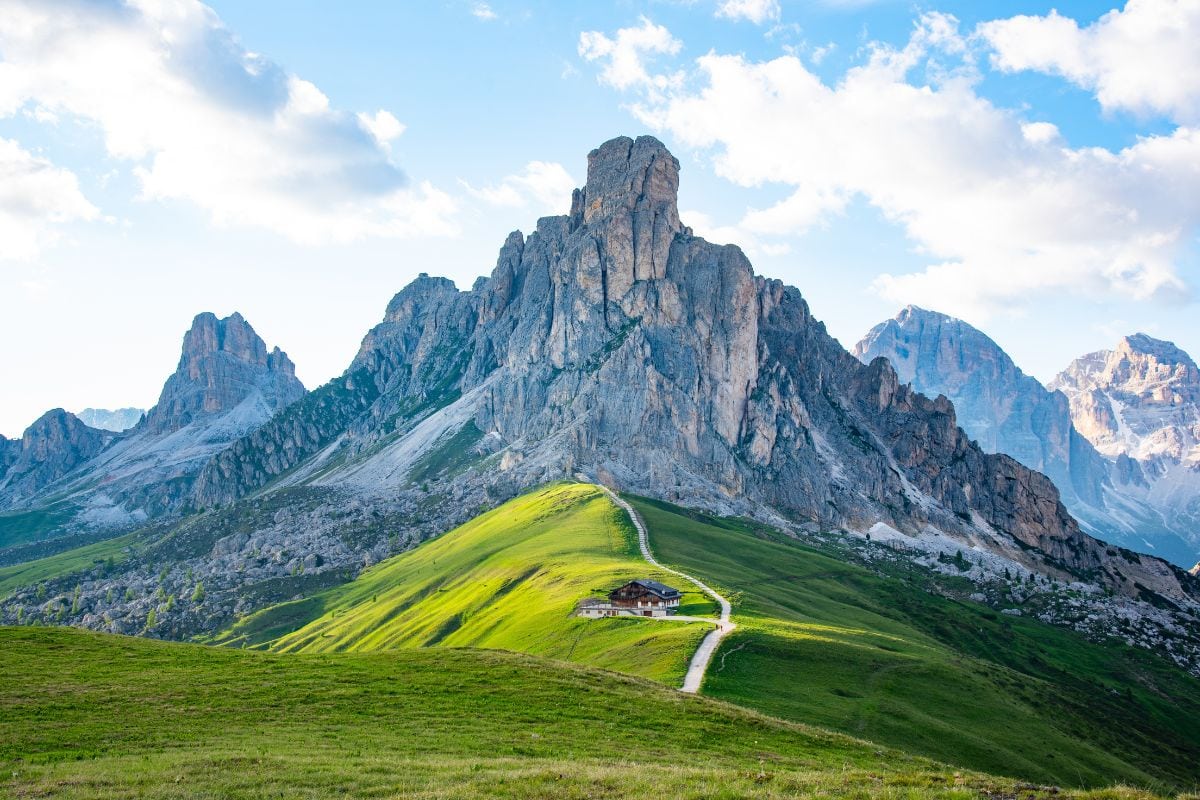Italy’s Stunning Landforms: From Majestic Alps to Sun-Kissed Coastlines
Italy, the “Bel Paese” (beautiful country), is renowned for its art, history, cuisine, and, of course, its breathtaking landscapes. A diverse tapestry of landforms, sculpted by geological forces over millennia, defines Italy’s unique beauty. From the snow-capped peaks of the Alps to the sun-drenched shores of the Mediterranean, Italy offers a visual feast for every traveler. This article explores the remarkable variety of Italy’s landforms, highlighting their beauty and significance.
The Sculpting Hand of the Alps: Mountains of Majesty
The majestic Alps, forming a natural border in northern Italy, are a defining feature of the country’s geography. These towering mountains, remnants of ancient geological upheavals, provide a stunning backdrop for outdoor adventures and offer a stark contrast to the warmer climates further south.
- Dominant Peaks: The Italian Alps are home to some of Europe’s highest peaks, including Monte Rosa, Matterhorn (shared with Switzerland), and Gran Paradiso.
- Glacial Landscapes: Glaciers, carving through the mountains over centuries, have created stunning valleys, glacial lakes, and dramatic cirques.
- Winter Sports Haven: The Alps are a world-class destination for skiing, snowboarding, and other winter sports, attracting enthusiasts from around the globe.
- Summer Hiking and Climbing: In the warmer months, the Alps transform into a paradise for hikers, climbers, and nature lovers.
The Rolling Hills and Fertile Plains: A Landscape of Abundance
South of the Alps, the Italian landscape transitions into a more gentle terrain of rolling hills and expansive plains. These areas, shaped by rivers, volcanic activity, and erosion, are crucial to Italy’s agricultural productivity.
- The Po Valley: This fertile plain, stretching across northern Italy, is the country’s agricultural heartland, fed by the Po River and its tributaries.
- Tuscan Hills: The iconic Tuscan landscape, with its rolling hills, vineyards, and olive groves, is a picture-postcard image of Italy.
- Umbria’s Green Heart: Known as Italy’s “Green Heart,” Umbria features lush hills, forests, and charming medieval towns.
- Volcanic Influence: Regions like Campania and Lazio benefit from fertile volcanic soils, ideal for agriculture and viticulture.
The Italian Coastlines: A Mosaic of Beauty
Italy’s extensive coastline, stretching for thousands of kilometers, offers a breathtaking diversity of landscapes, from rugged cliffs to sandy beaches. The influence of the Mediterranean Sea is undeniable, shaping the climate, culture, and lifestyle of coastal regions.
- The Amalfi Coast: This UNESCO World Heritage site is renowned for its dramatic cliffs, colorful villages, and stunning views.
- The Cinque Terre: Five picturesque villages clinging to the Ligurian coastline, connected by trails and offering breathtaking coastal scenery.
- Sardinia’s Emerald Coast: Known for its crystal-clear waters, white-sand beaches, and luxurious resorts.
- Sicily’s Diverse Coastline: From the volcanic beaches of Etna to the sandy shores of the Aeolian Islands, Sicily offers a diverse coastal experience.
- Adriatic Coast: Characterized by long sandy beaches, shallow waters, and popular seaside resorts.
The Volcanic Legacy: Shaping the Land and Influencing Life
Italy is home to several active volcanoes, including Mount Etna in Sicily, Vesuvius near Naples, and Stromboli in the Aeolian Islands. These volcanoes, while posing potential hazards, have also profoundly shaped the Italian landscape and culture.
- Fertile Soils: Volcanic ash enriches the soil, making it ideal for agriculture, especially in regions like Campania.
- Thermal Springs: Volcanic activity fuels thermal springs, attracting visitors seeking relaxation and therapeutic benefits.
- Unique Landscapes: Volcanoes have created unique landforms, such as lava flows, craters, and volcanic islands.
- Cultural Significance: Volcanoes have played a role in shaping Italian mythology, folklore, and history.
Conclusion: A Land of Unparalleled Beauty
Italy’s diverse landforms, from the towering Alps to the sun-kissed coastlines, contribute to its unparalleled beauty and appeal. Whether you’re a hiker, a beach lover, a history enthusiast, or simply someone who appreciates natural beauty, Italy offers a landscape to captivate and inspire. The country’s geological history has created a stunning tapestry of terrains, ensuring that a journey through Italy is a journey through a world of natural wonders. Explore, discover, and be amazed by the beauty that Italy has to offer.
Frequently Asked Questions (FAQs)
1. What is the highest mountain in Italy?
The highest mountain in Italy is Mont Blanc (Monte Bianco), which is also the highest peak in the Alps. It’s shared with France.
2. What are some popular activities to do in the Italian Alps?
The Italian Alps are popular for skiing, snowboarding, hiking, climbing, mountain biking, and enjoying the stunning scenery.
3. Which Italian coastline is considered the most scenic?
The Amalfi Coast is often considered the most scenic, with its dramatic cliffs, colorful villages, and breathtaking views. However, the Cinque Terre, Sardinia’s Emerald Coast, and other areas also offer incredible beauty.
4. Are there any active volcanoes in Italy?
Yes, Italy has several active volcanoes, including Mount Etna in Sicily, Vesuvius near Naples, and Stromboli in the Aeolian Islands.
5. What is the best time of year to visit Italy to see its landforms?
The best time to visit depends on your interests. For skiing and winter sports, the winter months are ideal. For hiking and exploring the mountains, spring and fall offer pleasant temperatures. The summer months are best for enjoying the coastlines and beaches.




